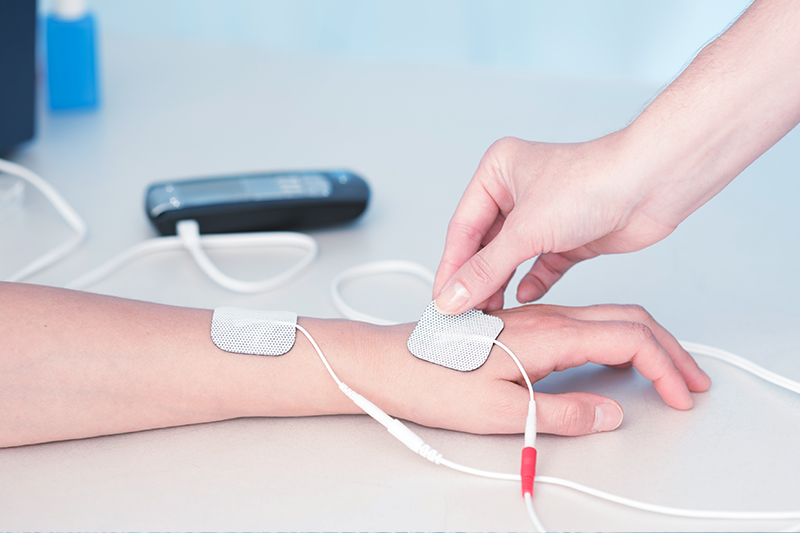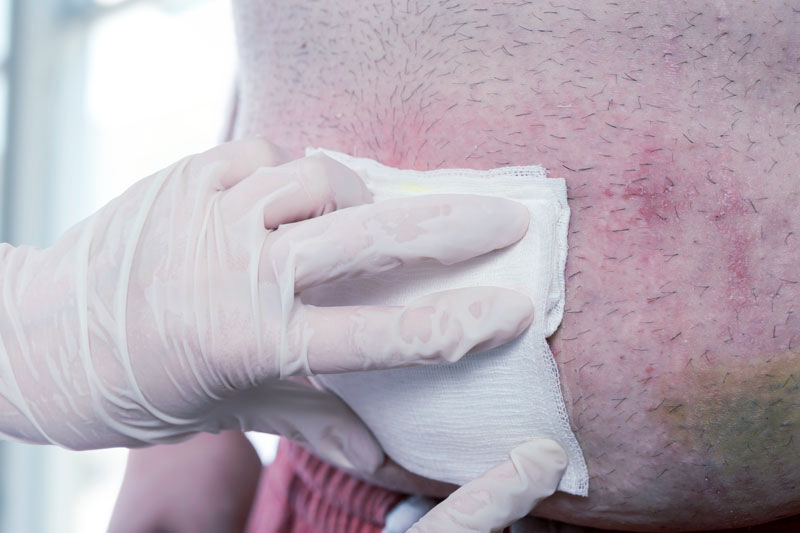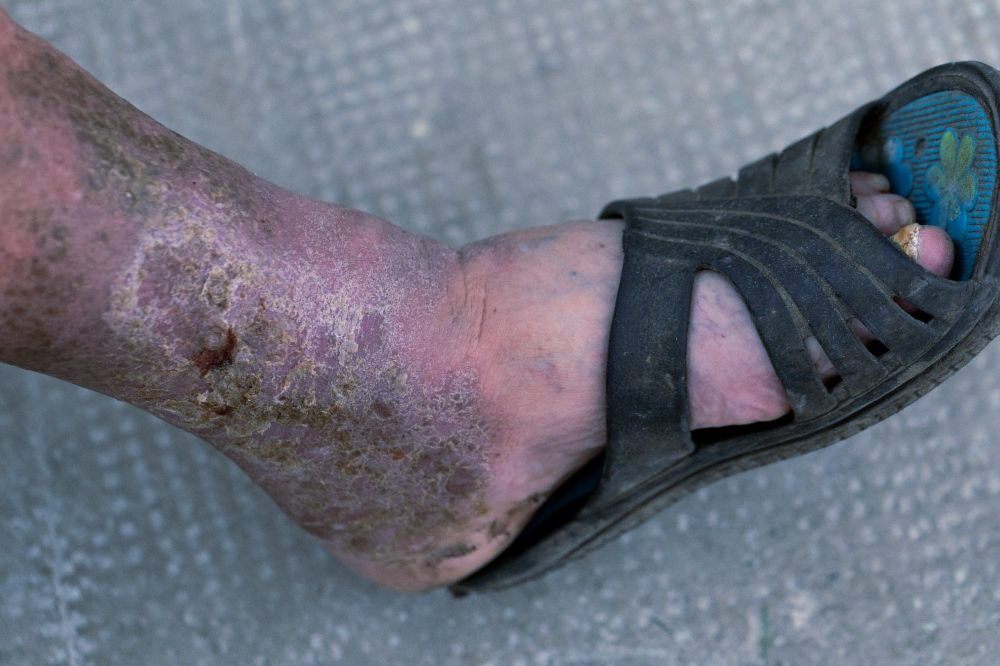Treatments We Provide
Amniotic Membrane Allografts
At Chronic Wound Solutions of Texas, we are always seeking innovative ways to provide the highest quality care to our patients in San Antonio. One of the groundbreaking treatments we offer is the Amniotic Membrane Allograft, a highly effective solution for various types of wounds and skin conditions. This innovative treatment leverages the healing power of amniotic tissue to accelerate the wound healing process, reduce pain, and improve overall recovery outcomes.

What is Amniotic Membrane Allograft?
An Amniotic Membrane Allograft is a type of biologic graft derived from the amniotic membrane, a part of the placenta that contains vital nutrients and growth factors essential for tissue growth, protection, and healing. The amniotic membrane is composed of two layers: the chorion and the amnion. This natural tissue has remarkable regenerative capabilities and is commonly used in medical procedures to cover and protect wounds, encouraging faster and more efficient healing. The benefits of using an Amniotic Membrane Allograft for wound healing are extensive:
- Accelerated Healing – The growth factors and cytokines present in the amniotic membrane enhance cellular activities that promote tissue regeneration, leading to faster wound healing.
- Pain Reduction – Research indicates that amniotic membrane grafts can significantly reduce pain, providing immediate and sustained relief.
- Lower Infection Risk – Provides a protective barrier against infections.
- Anti-Inflammatory Properties – The natural anti-inflammatory agents in the amniotic tissue help minimize swelling and reduce the risk of infection.
- Biocompatibility – Since the tissue is derived from the human placenta, it is biocompatible, minimizing the risk of rejection and complications.
- Reduced Scarring – By modulating the inflammatory response, the graft helps minimize scar tissue formation.
Amniotic Membrane Allograft Uses
Amniotic membrane allografts are increasingly utilized in various medical treatments due to their unique regenerative and anti-inflammatory properties. These allografts provide a natural scaffold that supports tissue repair and promotes faster healing across a range of conditions. Below are some of the key applications where amniotic membrane allografts have proven to be particularly effective:
- Diabetic Foot Ulcers – Helps in faster and more effective healing.
- Venous Leg Ulcers – Provide a natural barrier to protect and heal.
- Pressure Ulcers – Offers relief and accelerates recovery.
- Surgical Wounds – Enhances post-operative recovery.
Amniotic Membrane Allograft for Burn Treatment
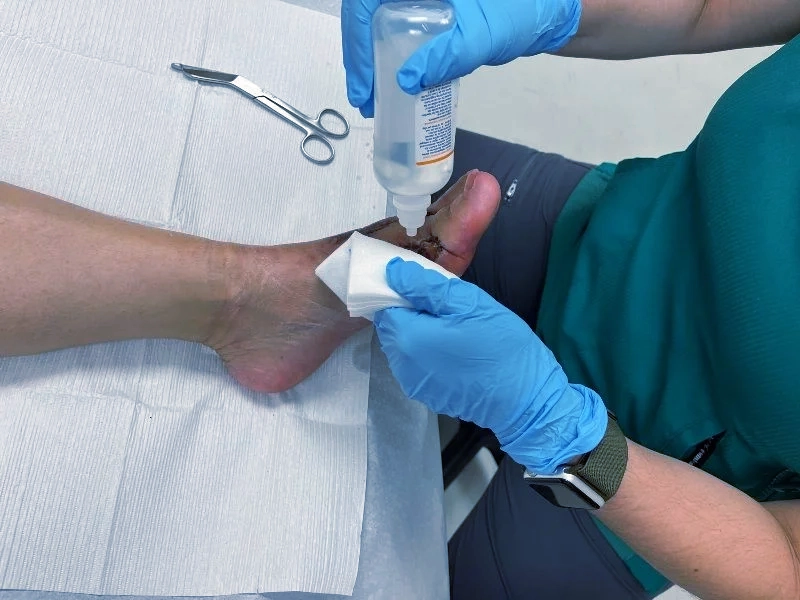
Amniotic Membrane Allograft vs. Synthetic Grafts
Amniotic Membrane Allograft Procedure
Cost and Accessibility
Your Trusted Source for Amniotic Membrane Allografts in San Antonio
At Chronic Wound Solutions of Texas, we are dedicated to offering the most advanced and effective treatments for wound care. As leading providers of Amniotic Membrane Allografts in San Antonio, we are committed to helping our patients achieve faster, more complete recoveries. If you or a loved one is struggling with a chronic or complex wound, contact us today to learn more about how Amniotic Membrane Allografts can help.
What is Amniotic Membrane Allograft?
Amniotic membrane allograft is a type of human tissue graft derived from the amniotic membrane, which is the innermost layer of the placenta. This membrane is rich in growth factors, cytokines, and extracellular matrix components that promote healing and regeneration. Amniotic membrane allografts are used in various medical procedures to assist in tissue repair and healing.
How Does an Amniotic Membrane Allograft Work?
- Promote cell growth and tissue repair.
- Reduce inflammation and scarring.
- Provide a protective barrier against infection.
- Facilitate the regeneration of healthy tissue.
The graft acts as a scaffold that supports the body’s natural healing processes, making it an effective option for treating chronic wounds, eye conditions, and more.
What Are the Amniotic Membrane Allograft Benefits?
- Enhanced Healing – The growth factors and cytokines in the amniotic membrane accelerate the healing of wounds and tissue.
- Reduced Inflammation – The graft has anti-inflammatory properties that can reduce swelling and pain.
- Decreased Scarring – By promoting healthy tissue growth, the graft helps minimize scarring.
- Protection Against Infection – The graft provides a natural barrier against pathogens.
- Versatility – It can be used in various applications, including wound care, eye surgery, and orthopedic procedures.
What are the Uses of an Amniotic Membrane Allograft in Wound Care?
- Chronic Wounds – These allografts are effective in treating non-healing diabetic ulcers, venous leg ulcers, and pressure sores. Their rich composition of growth factors accelerates the healing process and reduces the risk of infection.
- Surgical Wounds – Following surgical procedures, amniotic membrane allografts can enhance healing and reduce complications by serving as a protective barrier and promoting tissue regeneration.
- Burns – In cases of partial-thickness burns, amniotic membranes act as a biological dressing, facilitating healing while minimizing pain and scarring.
- Traumatic Wounds – For traumatic injuries, these allografts can help improve wound closure and healing times by providing an ideal scaffold for new tissue growth.
What Role Do Amniotic Membrane Allografts Play in Burn Treatment?
Can Amniotic Membrane Allografts be Used for Eye Surgery?
Are There Any Risks Associated With Amniotic Membrane Allografts?
- Allergic Reactions – Although rare, some patients may have allergic reactions to the graft material.
- Infection – As with any surgical procedure, there is a risk of infection at the site of application.
- Graft Rejection – In very rare cases, the body may reject the graft.
We will discuss these risks with you and take measures to minimize them.
How to Prepare for My Amniotic Membrane Allograft?
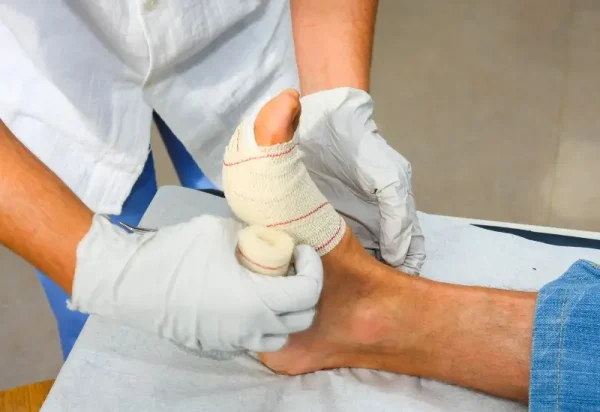
Amniotic Membrane Allograft Procedure
- Preparation – The area to be treated is cleaned and prepared.
- Application – The amniotic membrane allograft is applied to the wound or surgical site, where it acts as a natural bandage. The membranes are often secured with sutures or adhesives and eventually integrate with the body.
- Monitoring – After application, the site is monitored for proper integration and healing.
The process is usually quick and minimally invasive, with little to no pain or discomfort.
How Long Does it Take for an Amniotic Membrane Allograft to Heal?
What is the Aftercare for an Amniotic Membrane Allograft?
- Refrain from strenuous physical activities that may stress the graft site.
- Keep the dressing clean and dry to prevent infection.
- Avoid soaking the treated area in water, such as swimming pools or baths.
- Do not apply lotions, ointments, or creams to the graft site unless specifically instructed.
What Signs Should I Watch for Post-Treatment and Why?
- Increased redness or swelling – While some swelling is normal, significant or worsening redness may indicate inflammation or infection at the graft site.
- Discharge – Any unusual discharge that is foul-smelling, purulent, or excessive could be a sign of infection and should not be ignored.
- Pain or tenderness – An increase in pain or tenderness beyond what was expected from the procedure could suggest complications, and it’s important to consult your healthcare provider.
- Fever or chills – These systemic symptoms could indicate a more widespread infection, necessitating immediate medical attention.
Monitoring these signs is vital for early detection of potential issues and ensuring effective healing. Promptly addressing any concerns can help prevent complications and enhance the overall success of the graft.
Is an Amniotic Membrane Allograft Safe?
How Are Amniotic Membrane Allografts Stored and Handled?
Amniotic Membrane Allograft vs. Other Treatments
- Biological Properties – They provide natural healing factors and anti-inflammatory benefits that are not present in synthetic materials.
- Reduced Scarring – They generally result in less scarring compared to traditional treatments.
- Versatility – Amniotic membrane allografts can be used in a variety of medical fields, from wound care to ophthalmology.
For many patients, especially those with complex wound conditions, amniotic membrane allografts may result in a faster and more effective healing experience.
Who Can Benefit from Amniotic Membrane Allograft?
- Chronic Wounds – Such as diabetic ulcers or venous ulcers.
- Eye Conditions – Including dry eye syndrome and corneal ulcers.
- Orthopedic Issues – Where tissue regeneration is needed.
What is the Cost of Amniotic Membrane Allograft Treatment?
Common Conditions We Treat
Featured Treatments We Provide
